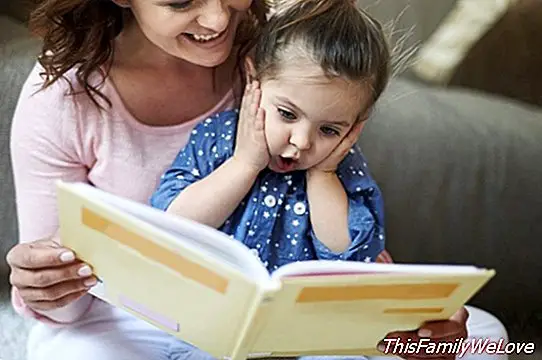Tips for telling stories that count

The main tool for our stories work and become stories that count Our children already have it. It is something innate. With their own imagination they get into the story and become the character of the story and build the environment where it develops.
To tell stories that count It is convenient to follow a literary structure, that is, in the stories, as in the best novels, there is always a presentation, a knot, and a good and wonderful outcome.
The presentation of the stories that count
In the presentation it is about capturing the attention, the characters and the plot are presented. In it the eyes of the listener are opened, the scene is set and it is prepared for surprise.
For this reason, starting as traditionally has been done in the usual stories with "Once upon a time it was ..." or "Once upon a time" provoke the need to know what comes next. This principle is the "spark" that gives way to the process for the outcome or resolution of the conflict to arrive.
The development of stories or knot
The knot of the story is the moment in which the plot of the story is set in motion. The events will happen continuously. Some will take us to others in a coherent way, with a rhythm that we should try not to fall at any time.
Without causing therefore uneasiness, or acceleration. Children's stories are channelers of positive emotions. Although they generate the tension that underlies the conflict, this is never enough to generate anguish or distress because it offers us the strategies, the techniques, the guidelines to solve.
The end of the stories
The outcome is the solution to the conflict. The story, as it happens in life itself, must have a resolution that should surprise and at the same time reassure the listener of the story. It must impact us and for that the tone of voice and other non-verbal resources play an important role when telling stories.
Tips for telling stories that count
- The content of the story is as important as how we tell it: our tone of voice, rhythm, cadence and our corporal gestures are variable, essential to catch your attention and make history credible. Keep in mind that stories have the innate ability to stimulate the ability to auto-suggestion more introduce us to history, live it and make it more exciting.
- Acts with reading. We must remember that our son observes our face, perceives our emotional tranquility and sincere availability to give him a short time and get involved in the narrative.
- The stories, better short and brief. Keep in mind that, being stories and not literary stories, they must be short and can be done in prose or verse.
We can invent stories together with rhymes and sketches, easy to remember at any time. They will serve as emotional "tele-transporters" whenever they hum or remember them.
Ana Gutiérrez and Pedro Moreno. Clinical psychologists




